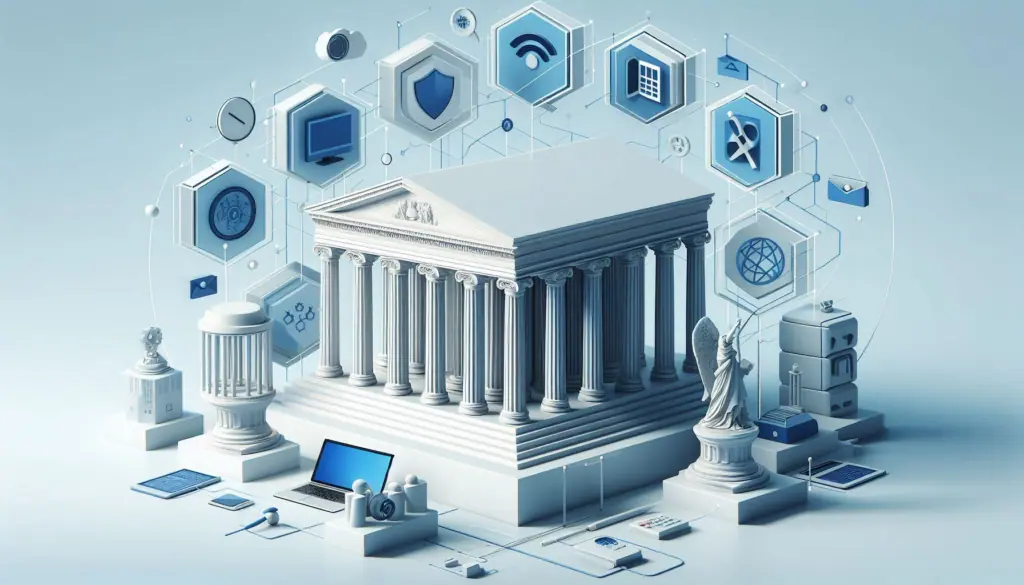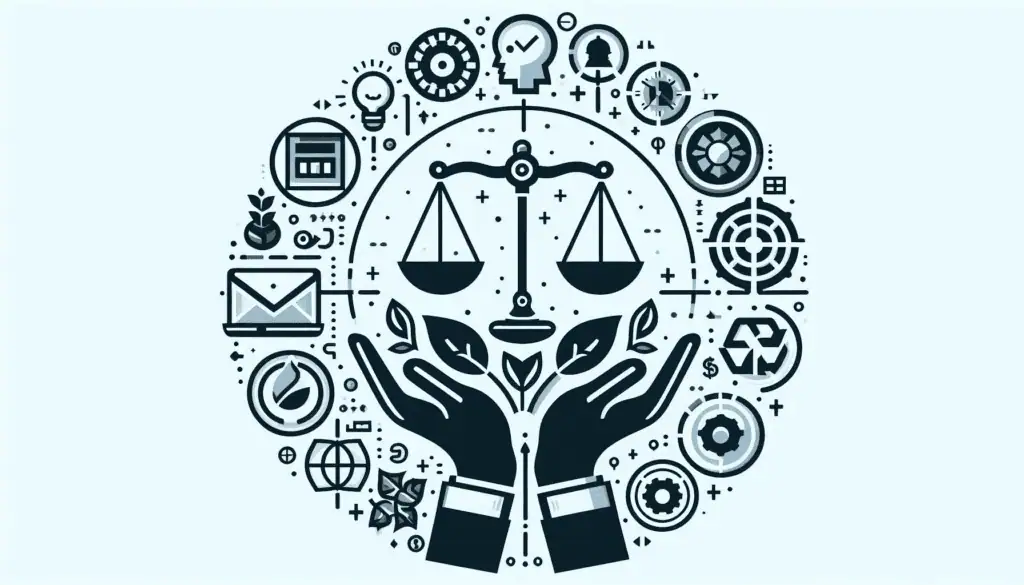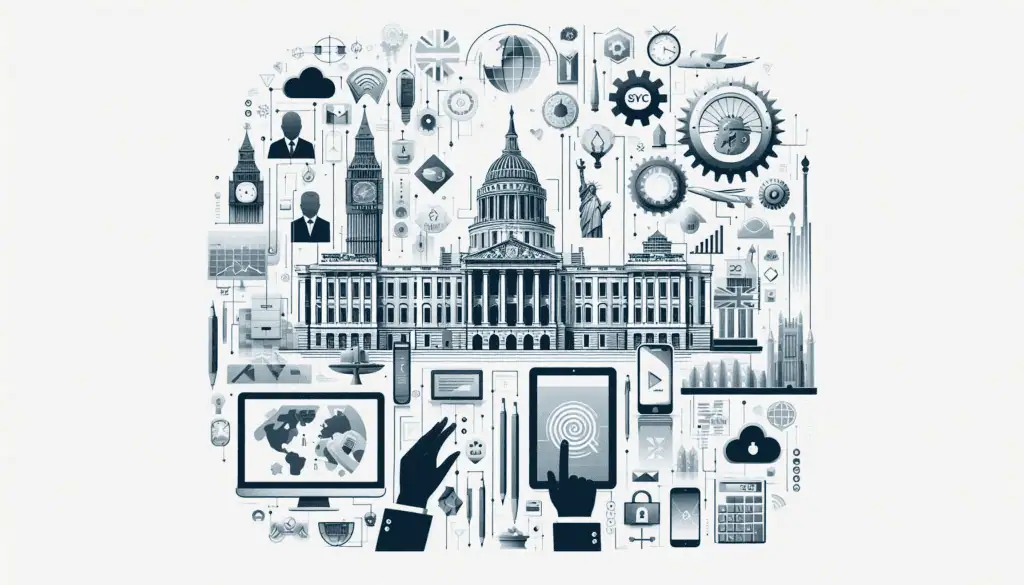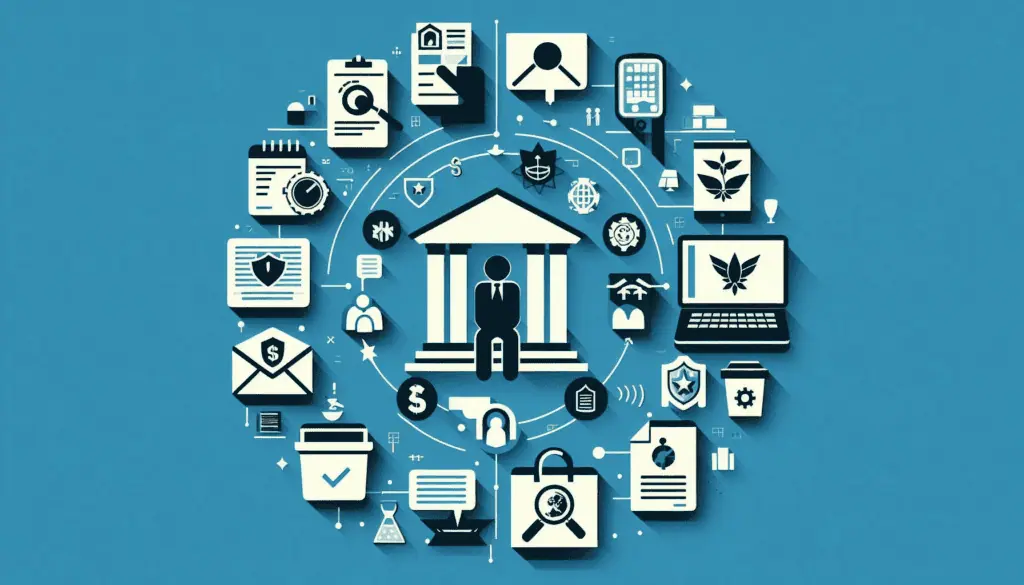Digital Transformation in Government: Challenges, Examples

Written By:
Last Updated Date:
TL;DR
Governments worldwide are embracing digital transformation to improve efficiency, transparency, and citizen services. This involves using digital tools, data analytics, and online platforms. However, successful digital government requires more than just technology.
A robust legal framework, a skilled digital workforce, and effective change management are crucial for a smooth transition. Leading countries like Dubai, Estonia, and Singapore are demonstrating how to put citizens first and leverage technology to create a more user-friendly and efficient government experience.
Key Takeaways
- Digital transformation revolutionizes government services, offering citizens greater efficiency, convenience, and transparency.
- Legal solid frameworks ensure data security, privacy, and compliance during digital transformation.
- Building a skilled digital workforce with expertise in data analytics, cybersecurity, and user experience is crucial.
- Effective change management strategies help navigate employee resistance and ensure the adoption of new technologies.
In the flashy 90s, South Korea dreamed of becoming a tech titan. Their plan? The National Information Infrastructure (NII) is a digital superhighway zooming information nationwide. Homes would be plugged in, and information would zipping faster than a K-Pop dance move.
Like a K-Pop fan showering their idol with gifts, the government poured billions into the NII. Visions danced in their heads. A central information hub, a digital brain for the country. But cracks appeared faster than a bad perm.
Costs ballooned faster than a contestant on a reality show. Glitches sprouted like weeds, causing more headaches than a soju hangover. But the most significant question mark loomed larger than G-Dragon’s hair – what would people do with all this information? The NII lacked cool apps, feeling like a fancy karaoke bar with no mics.
The NII wasn’t a complete flop. It laid the groundwork for Korea’s tech prowess but served a valuable lesson: flashy tech needs a good plan, a focus on users, and responsible use. After all, in the tech world, the only constant is change, and the best shows know how to adapt for the next encore.

Challenges of South Korea’s National Information Infrastructure (NII)
- Unrealistic Planning: The initial cost estimates for the NII were overly optimistic. This led to significant cost overruns, straining the project’s budget.
- Technical Difficulties: The cutting-edge technology of the 1990s wasn’t as seamless as envisioned. Compatibility issues and glitches hampered the network’s smooth operation.
- Lack of User Focus: The project focused heavily on infrastructure development without considering how citizens would interact with the NII. This resulted in a lack of user-friendly applications and a clunky user experience.
- Concerns About Control: The central information network raised concerns about government information control. This public distrust hindered the project’s potential.
Those challenging situations have some lessons to learn from.
Digital Services for Governments

Governments are becoming tech-savvy to make things easier for you. This means using websites, apps, and even smart data analysis to streamline how things work. No more mountains of paperwork.
Digital processes mean faster and simpler steps to get what you need. Imagine a one-stop online shop for all your government interactions, saving you time and hassle. This tech also brings transparency. You can track your requests and see government records more quickly, which helps build trust between you and the people who serve you.
Legal and Regulatory Framework

For example, building a house requires a strong foundation, and a digital government needs clear rules. These rules, called a legal framework, ensure that everything the government does online is safe and legal and protects your rights. You can trust that new online services and tools are built correctly.
Here are some critical considerations for the legal public policy and regulatory framework to support digital transformation:
Data Protection and Privacy Laws

As governments handle vast amounts of personal data, robust data protection and privacy laws are crucial. These laws should outline the principles of data collection, storage, and usage, ensuring that citizen data is safeguarded and used responsibly.
The framework should include data privacy, consent, and transparency provisions, aligning with international standards.
Cybersecurity Regulations

With the increasing reliance on digital systems and infrastructure, cybersecurity becomes critical. The legal framework should set standards and guidelines for cybersecurity measures, including secure data transmission, network protection, and incident response. Governments should establish protocols for reporting and managing cybersecurity breaches to protect citizen information and critical infrastructure.
Digital Identity and Authentication

Digital identity plays a pivotal role in accessing government services. The legal framework should outline the requirements for secure and reliable digital identity systems, including electronic signatures and authentication mechanisms. This ensures citizens can confidently and safely interact with government platforms and portals.
Open Data and Transparency

Promoting open data initiatives can drive innovation and transparency. The legal framework should establish guidelines for government data sharing, ensuring that non-sensitive information is made publicly available. This fosters collaboration between government, citizens, and the private and public sectors, leading to the development of data-driven solutions and improved governance.
Interoperability and Standards

The legal framework should set technical standards and protocols to ensure seamless integration and interoperability between government systems and agencies.
This includes defining data exchange formats, application programming interfaces (APIs), and data interoperability guidelines. Standardization facilitates the efficient exchange of information and improves the overall citizen experience when accessing digital government services.
Digital Inclusion and Accessibility

The legal framework should promote digital inclusion by ensuring that digital government services are accessible to all citizens, including those with disabilities or limited access to technology. This includes setting accessibility standards for websites, mobile applications, and other digital platforms in line with international guidelines such as the Web Content Accessibility Guidelines (WCAG).
Cross-Border Data Flows and Collaboration

Recognizing the global nature of digital interactions, the legal framework should address cross-border data flows and international collaboration. This includes establishing mutual recognition agreements for digital identities, electronic signatures, and data privacy standards. By working together to create a seamless digital ecosystem, governments can facilitate trade, enhance security, and improve people’s movement.
Ethical and Bias Considerations

The legal framework should address ethical considerations in AI and algorithmic decision-making. This includes guidelines for fairness, transparency, and accountability in automated systems. Governments should also address bias and discrimination concerns, ensuring digital transformation initiatives do not inadvertently disadvantage certain groups or reinforce existing inequalities.
Governance and Oversight

Strong governance and oversight mechanisms are crucial to the government’s digital transformation. The legal framework should establish clear roles and responsibilities for government entities, regulatory bodies, and oversight agencies. This includes defining accountability measures, performance indicators, and mechanisms for citizen feedback.
Continuous Review and Adaptation

Digital transformation is an ongoing process, and the legal framework should be flexible and adaptable to accommodate technological advancements and changing citizen needs. Regular reviews and updates should be mandated to ensure the framework remains relevant and practical.
By following a comprehensive legal and regulatory framework that addresses these fundamental considerations, governments can provide a solid foundation for their digital transformation initiatives. This framework will ensure that government services are delivered securely, efficiently, and with the protection of citizen rights and interests at its core when undergoing digital transformation.
Digital Talent and Change Management

The success of any digital transformation hinges on two crucial internal factors: fostering a skilled digital workforce and implementing effective change management strategies. These elements are equally essential for government entities undergoing digital transformation.
Digital Talent
Digital talent forms the backbone of successful digital transformation. This means developing a government workforce with the skills and mindset to effectively embrace and leverage digital technologies.
Here’s how governments can build a solid digital talent pool:
- Attract and retain specialists: Partner with educational institutions and industry to attract digital specialists by offering competitive salaries and career development opportunities.
- Continuous Learning: Invest in upskilling programs to ensure the workforce remains adaptable and proficient in emerging technologies like data analytics, cybersecurity, and user experience design.
- Fostering Innovation: Encourage a culture of experimentation and innovation. This can involve providing safe spaces for employees to explore new ideas and technologies, facilitating brainstorming sessions, and fostering knowledge sharing through cross-functional collaboration.
- Knowledge Sharing Platforms: Create platforms for knowledge sharing and collaboration to disseminate digital skills and best practices throughout the organization.
Effective Change Management
Digital transformation is not just about technology; it’s about people. Effective change management is essential to navigate the complexities of this process. Here’s how governments can manage the human aspect of their digital transformation strategy:
- Transparency: Maintain open and frequent communication about the digital transformation journey, including goals, expected impacts, and potential challenges. This transparency builds trust and fosters buy-in.
- Employee Engagement: Actively involve employees in the process. Get feedback, address concerns, and encourage participation to ensure a smooth transition.
- Change Agents: Identify and empower change agents within the organization. These individuals can champion the initiative, drive enthusiasm amongst colleagues, and provide peer support during the transition.
- Training and Support: Offer comprehensive training programs and resources to help employees adapt to new technologies and work processes. This ensures knowledge transfer and skill development.
- Celebrate Milestones: Recognize and celebrate small wins and milestones achieved during the transformation journey. This will maintain morale and keep the momentum going.
Why is it Critical to Accelerate the Transition to Digital Government?

The acceleration of digital transformation in the government and public sector is imperative for several reasons:
It’s vital for enhancing service delivery and citizen satisfaction. By transitioning to digital government, bureaucratic processes are streamlined, and citizens enjoy easy online access to information and services.
This shift reduces red tape and eliminates manual hassles, making interactions with government entities more efficient and convenient. Additionally, keeping pace with technological advancements and global changes is crucial.
Governments must adapt to stay agile and resilient, as demonstrated during the COVID-19 pandemic. Governments can leverage emerging technologies by accelerating digital transformation to serve their constituents better and respond to future challenges.
Digital transformation promotes transparency and accountability in governance. Digital platforms and open data initiatives empower citizens to access information, track government spending, and engage in decision-making processes.
Transform the Relationship Between Public Administration and Citizens

Governmental digital transformation extends beyond internal operations. It transforms the relationship between public administration and citizens.
By embracing digital processes and services, governments can enhance citizen engagement, improve access to information, and deliver efficient services.
Digital platforms and online portals provide citizens with a user-friendly interface to interact with government entities, access services, and provide feedback. This transformation improves transparency, reduces bureaucratic barriers, and fosters a more inclusive and responsive public administration.
Additionally, digital technologies enable governments to leverage data analytics, gain insights into citizen needs, and make informed decisions, ultimately improving citizen experience and strengthening their trust in government institutions.
What is the Digital Strategy

This strategy outlines a clear vision, sets measurable goals, and defines the roadmap for digital initiatives. The digital strategy involves identifying critical areas for digitization, such as citizen services, data management, and process automation.
The strategy should be citizen-centric, aiming to improve service delivery, enhance transparency, and increase citizen engagement.
Additionally, it should address technological infrastructure, data security, and privacy concerns. By developing a robust digital strategy, state and local governments can ensure that digital transformation efforts are well-coordinated, aligned with organizational goals, and responsive to citizen’s needs, ultimately driving efficient and effective public service delivery.
Examples of Digital Transformation in Government

1. Dubai

Dubai’s government initiative, Dubai Smart City, aims to transform the city into a leading example of an innovative and sustainable metropolis.
Critical Features of The Dubai Smart City
Six focus areas
Their strategy concentrates on improving six key sectors: transportation, infrastructure, communications, economic services, urban planning, and electricity.
Data-driven approach
Dubai emphasizes collecting and analyzing data to inform decision-making and optimize city services. This includes initiatives like the Dubai Data Initiative.
Tech at the forefront
They’re embracing various technologies to achieve their goals, including the Internet of Things (IoT), artificial intelligence (AI), blockchain, and autonomous vehicles. There’s even a Dubai AI Lab and a Dubai Blockchain Strategy.
Innovation focus
Dubai is fostering a culture of innovation to develop new solutions for urban challenges. This includes the Dubai Startup Support program and the Global Blockchain Challenge.
Happiness Agenda
Uniquely, Dubai incorporates a happiness agenda into its bright city vision. It aims to use technology to improve resident’s overall well-being.
The projected revenue in the Smart Cities market for the United Arab Emirates is expected to reach US$321.60m in 2024. The revenue is anticipated to exhibit an annual growth rate (CAGR 2024-2028) of 11.60%, leading to a market volume of US$498.80m by 2028.
Compared globally, China is expected to generate the highest revenue with US$43,550.00m in 2024. The United Arab Emirates is pioneering artificial intelligence to create smart cities that optimize energy consumption and enhance quality of life.
2. Estonia

Estonia is a pioneer in e-voting
- Estonia was the first country to implement electronic voting on a national scale, starting in 2005. This has made it a prime example for studying the feasibility and challenges of e-voting systems.
The Estonian e-voting system
- The system’s core relies on a robust digital infrastructure and high public trust in Estonian government institutions.
- Voters use a digital ID card and a particular reader to cast their ballots online.
- Security and transparency are emphasized through features like digital receipts and end-to-end encryption.
Successes and challenges of e-voting in Estonia
- Studies indicate that Estonia’s internet voting system has been relatively successful in increasing voter turnout and gaining user acceptance.
- However, there are lingering concerns regarding security vulnerabilities and potential digital exclusion for those without the necessary technology or skills.
Overall significance of Estonia’s e-voting System
Estonia’s experience with e-voting offers valuable insights for other countries considering adopting similar systems. It highlights the critical role of a solid digital infrastructure, public trust, and robust security measures in ensuring the success of e-voting systems.
3. Singapore

Singapore’s Smart Nation initiative leverages technology to create a more efficient and livable city.
Strong Government Leadership
- Implemented clear policies to drive digital transformation.
- Initially focused on digitizing public services.
- Later, it incentivized IT adoption and development in the private sector.
- Adapted policies to support e-commerce growth.
- Continuously invested in workforce skills and infrastructure.
Key Success Factors of Singapore’s Smart Nation
- Strong collaboration across government agencies.
- Strategic partnerships with multinational companies.
- Data-driven policy decisions.
- Adaptable and responsive government.
- Leveraging Singapore’s small size as an advantage.
Evolution of the Journey of Singapore’s Smart Nation
- Phase 1 (1980-85): This phase focused on computerizing the public sector (National Computerization Plan & Civil Service Computerization Programme).
- Phase 2 (1986-90): Introduced National Information Technology (IT) Plan.
- Phase 3 (1991-99): Implemented IT2000 and National Information Infrastructure (NII).
- Phase 4 (2000-16): Focused on Infocomm 21, Connected Singapore, and Intelligent Nation 2015 (N2015).
- Phase 5 (2016-22): Likely concentrated on creating a Smart Nation with enhanced citizen services, a robust digital economy, and a resilient infrastructure.
What are the Main Challenges for Digital Government Transformation?

Key Challenges During Digital Transformation in Government
Old Computers and Systems
Updating outdated tech can be expensive and tricky, but it’s needed to make everything work seamlessly.
Change Can Be Scary
New ways of doing things can be unsettling for people who are used to the old system. Governments need to help their employees adjust comfortably.
Keeping Your Information Safe
Protecting your data from online threats is a top priority. Governments need strong defenses to keep everything secure.
Limited Budget
Making the switch to digital services can be pricey. Governments must carefully plan their spending to make it all work.
Finding the Right People
Tech skills are in high demand. Governments might struggle to find enough people with the proper knowledge to build and run these new systems.
Following the Rules
Governments must follow many regulations. Ensuring new digital systems comply with all the rules can take time and effort.
Serving Everyone
Citizens have different needs and access to technology. Governments must find ways to ensure everyone can use these new digital services, no matter what.
Making Fair Decisions
New technologies like AI can be great but must be fair and unbiased. Governments must ensure that these systems treat everyone equally.
Working Together
Different government departments need to collaborate effectively to make digital government work.
Keeping Up with Your Needs
Citizen’s expectations will grow as online services improve, and governments must keep innovating to meet those changing needs.
Interacting with Government Programs

Digital transformation in government improves citizen experiences. By adopting digital technologies, governments simplify processes and provide online platforms for citizens to access services.
Citizens can conveniently interact with government employees and programs, track their progress, and access information from anywhere. This transformation enhances transparency, reduces wait times, and offers self-service options, ultimately increasing citizen satisfaction and trust in the government.
Conclusion
The road to successful digital government transformation requires careful planning, strategic investment, and a commitment to overcoming challenges.
Establishing a robust legal framework ensures secure data management, protects privacy, and fosters innovation. Cultivating a talented workforce with the necessary digital skills is essential for operating and maintaining these new systems. Equally important is effective change management to navigate employee resistance and ensure the adoption of new technologies.
Frequently Asked Questions (FAQ)
I’m a Data Enthusiast and Content Writer with a passion for helping people improve their lives through data analysis. I’m a self taught programmer and has a strong interest in artificial intelligence and natural language processing. I’m always learning and looking for new ways to use data to solve problems and improve businesses.






